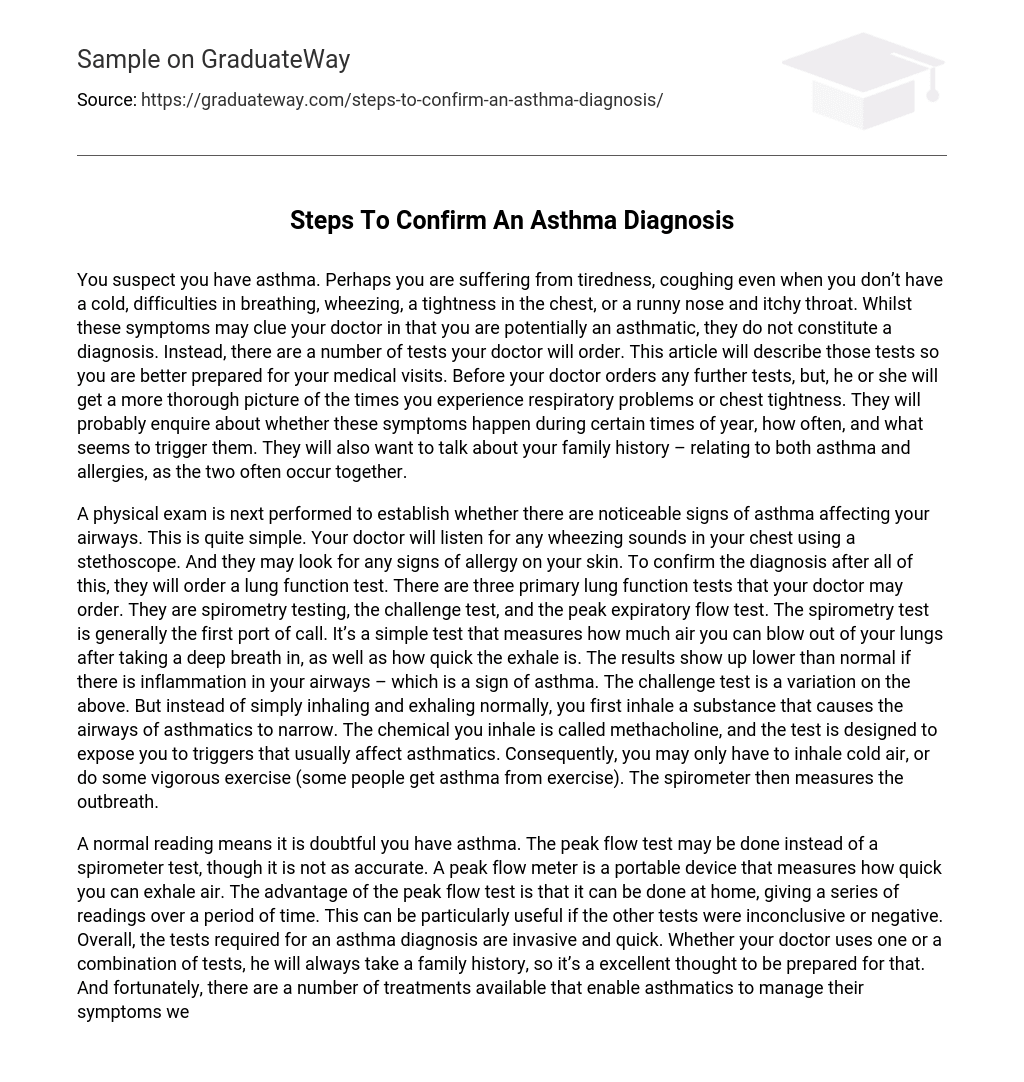You suspect you have asthma. Perhaps you are suffering from tiredness, coughing even when you don’t have a cold, difficulties in breathing, wheezing, a tightness in the chest, or a runny nose and itchy throat. Whilst these symptoms may clue your doctor in that you are potentially an asthmatic, they do not constitute a diagnosis. Instead, there are a number of tests your doctor will order. This article will describe those tests so you are better prepared for your medical visits. Before your doctor orders any further tests, but, he or she will get a more thorough picture of the times you experience respiratory problems or chest tightness. They will probably enquire about whether these symptoms happen during certain times of year, how often, and what seems to trigger them. They will also want to talk about your family history – relating to both asthma and allergies, as the two often occur together.
A physical exam is next performed to establish whether there are noticeable signs of asthma affecting your airways. This is quite simple. Your doctor will listen for any wheezing sounds in your chest using a stethoscope. And they may look for any signs of allergy on your skin. To confirm the diagnosis after all of this, they will order a lung function test. There are three primary lung function tests that your doctor may order. They are spirometry testing, the challenge test, and the peak expiratory flow test. The spirometry test is generally the first port of call. It’s a simple test that measures how much air you can blow out of your lungs after taking a deep breath in, as well as how quick the exhale is. The results show up lower than normal if there is inflammation in your airways – which is a sign of asthma. The challenge test is a variation on the above. But instead of simply inhaling and exhaling normally, you first inhale a substance that causes the airways of asthmatics to narrow. The chemical you inhale is called methacholine, and the test is designed to expose you to triggers that usually affect asthmatics. Consequently, you may only have to inhale cold air, or do some vigorous exercise (some people get asthma from exercise). The spirometer then measures the outbreath.
A normal reading means it is doubtful you have asthma. The peak flow test may be done instead of a spirometer test, though it is not as accurate. A peak flow meter is a portable device that measures how quick you can exhale air. The advantage of the peak flow test is that it can be done at home, giving a series of readings over a period of time. This can be particularly useful if the other tests were inconclusive or negative. Overall, the tests required for an asthma diagnosis are invasive and quick. Whether your doctor uses one or a combination of tests, he will always take a family history, so it’s a excellent thought to be prepared for that. And fortunately, there are a number of treatments available that enable asthmatics to manage their symptoms well. So well, in fact, that there are even world champion sports starts that are asthmatics!





